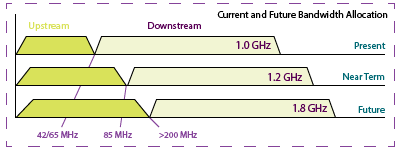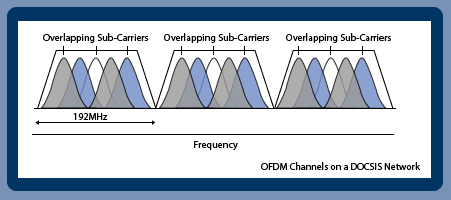As G Fast chipsets give Internet Service Providers (ISPs) a low-cost investment option to boost broadband speeds for their internet subscribers, cable companies are remaining competitive with a new specification of DOCSIS 3.1 that will give them the opportunity to boost broadband speeds of their existing co-axial cable-based modem services. Cable modem technology means cable operators can utilize their existing hybrid fiber-coaxial (HFC) infrastructure and deliver a throughput of D 10 Gbps/ U 1Gbps. The new specification will allow cable operators to compete with the new G Fast chipsets that can deliver gigabit speeds over the last 250 meters of a connection.
DOCSIS 3.1 allows Multiple System Operator’s (MSO’s) to continue to offer Over the Top Video (OTT), 4k videos and 3DTV streaming services.DOCSIS, also known as Data-Over Cable Service Interface Specification, specifies standards for customer premise equipment (CPE) and a cable modem termination system (CMTS).
Better Protocol Analyzer For Troubleshooting
Cable operators will need to rely on a more flexible protocol analyzer that can keep apace with the new DOCSIS 3.1 specifications. With an adequate protocol analyzer, network administrators can non-obtrusively monitor and gain access to RF parameters, troubleshoot MAC-level communications, and gain access to other network-maintenance capabilities.
DOCSIS 3.1 will require protocol analyzers that can handle a wider frequency spectrum (24 MHz to 192 MHz) and that can register frequency bands in the 1.8 GHz range. Protocol analyzers must also have the ability to configure and upgrade the protocol analysis system to be able to support older DOCSIS equipment as well.
Bandwidth Allocation
Because DOCSIS 3.1 will be able to operate on existing HFC networks, network administrators will have the opportunity to adjust upstream and downstream rates and plan for long-term network allocation. One of the main advantages that cable operators will be anticipating from DOCSIS equipment is the ability to allocate more bandwidth to a subscriber from the head ends of a cable operating facility without having to install additional hardware upgrades for a subscriber.
Orthogonal Frequency Division Multiplexing (OFDM)
Another key advancement in DOCSIS 3.1 is its Orthogonal Frequency Division Multiplexing (OFDM) transmission technique. OFDM compartmentalizes bandwidth into smaller sub-carriers approximately 25-50 KHz wide and helps reduce cross-talk interference to better be able to transmit data on parallel data streams or channels (924 MHz to 192 MHz for downstream and up to 96 MHz for upstream rates).
DOCSIS 3.1 also enables cable operators to “define multiple downstream profiles on a single channel. A downstream profile defines each of the sub-carriers own modulation formats and amplitude in the OFDM Channel”.
Docsis 3.1 will also rely on time and frequency multiplexing to transmit signals through a single lane, making it possible for the OFDMA and legacy SC-QAM channels to operate on the same frequency or operate simultaneously at different frequencies.
4096-QAM
The standard also specifies a requirement for a denser modulation format. Jumping from a 256-QAM to a 4096-QAM yields a lower SNR, which affects the received symbol with a “greater chance of being far from the expected symbol because higher order modulations mean higher density”. A lower SNR translates into more errors made on bit transmission and makes decision-making more error-prone. The 4K QAM modulation creates a challenge for cable operators since it will create a noisier environment.
Even though cable bandwidth yields faster speeds than DSL, subscribers share bandwidth and can experience a dip in speeds as more users share a connection.
Between DSL or cable broadband, who do you think will win the bandwidth battle? Leave us a comment below.






